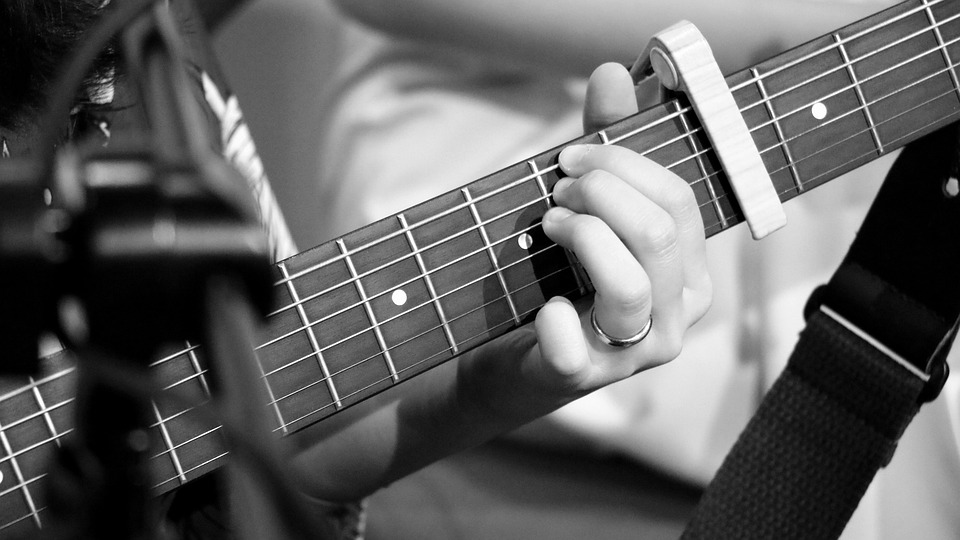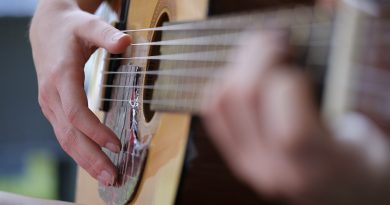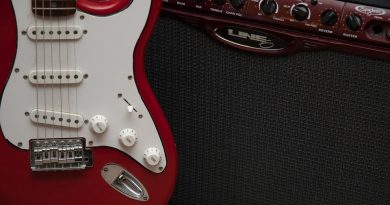Mastering Rhythm Guitar Techniques: A Comprehensive Guide to Guitar Chords
Mastering Rhythm Guitar Techniques: A Comprehensive Guide to Guitar Chords
Introduction
Rhythm guitar is an essential aspect of playing the guitar and is often overlooked in favor of lead guitar techniques. However, mastering rhythm guitar techniques is crucial for any guitarist looking to become a well-rounded musician. In this comprehensive guide, we will explore various aspects of rhythm guitar, focusing on guitar chords and how to master them effectively.
Understanding Guitar Chords
Guitar chords are the foundation of rhythm guitar playing. A chord is a collection of three or more notes played simultaneously to create a harmonious sound. Chords are the building blocks of music and are essential for creating melodies and harmonies. There are various types of guitar chords, including open chords, barre chords, power chords, and jazz chords. Each type of chord has a unique sound and can be used in different musical contexts.
Mastering Basic Chords
Before mastering more complex chord progressions and techniques, it is essential to start with the basic chords. Open chords, such as C, D, and G, are some of the most common chords used in popular music. Barre chords, which involve using one finger to press down multiple strings, are another essential technique for any guitarist to learn. Power chords, consisting of just the root note and the fifth, are commonly used in rock and punk music. Mastering these basic chords will provide a solid foundation for more advanced techniques.
Learning Chord Progressions
Once you have mastered basic chords, it is important to practice chord progressions. A chord progression is a series of chords played in a specific order to create a musical phrase. Common chord progressions, such as the I-IV-V progression, can be found in countless songs across various genres. Learning different chord progressions will help you develop your ear and musical understanding, allowing you to create interesting and dynamic rhythm guitar parts.
Developing Strumming Techniques
In addition to mastering chords and chord progressions, developing strong strumming techniques is vital for rhythm guitar playing. Strumming involves using a pick or your fingers to strike the strings of the guitar in a rhythmic pattern. Experiment with different strumming patterns, such as downstrokes, upstrokes, and various combinations, to create dynamic and engaging rhythms. Practice strumming along to a metronome or drum track to improve your timing and rhythm.
Exploring Rhythmic Patterns
Rhythmic patterns play a significant role in creating interesting and unique rhythm guitar parts. Experiment with various rhythmic patterns, such as syncopation, accents, and off-beat rhythms, to add complexity and depth to your playing. Pay attention to the dynamics of your strumming, varying the intensity and volume of your strokes to create a dynamic and expressive performance. Practice playing along to different styles of music to develop your sense of rhythm and timing.
Utilizing Chord Inversions
Chord inversions are another useful technique for adding color and variety to your rhythm guitar playing. A chord inversion involves rearranging the order of notes within a chord to create a different sound. By using chord inversions, you can create more interesting and melodic rhythm guitar parts. Experiment with different chord inversions and incorporate them into your playing to add depth and complexity to your sound.
Mastering Fingerpicking
Fingerpicking is a versatile technique that allows you to play melody and rhythm simultaneously on the guitar. Fingerpicking involves plucking the strings of the guitar with your fingers instead of using a pick. Practice different fingerpicking patterns, such as Travis picking or arpeggios, to develop your dexterity and coordination. Fingerpicking can add a beautiful and intricate texture to your rhythm guitar playing, making your performances more engaging and expressive.
Conclusion
Mastering rhythm guitar techniques is essential for any guitarist looking to become a well-rounded musician. By understanding and mastering guitar chords, chord progressions, strumming techniques, rhythmic patterns, chord inversions, and fingerpicking, you can create dynamic and engaging rhythm guitar parts. Practice regularly, experiment with different styles and techniques, and most importantly, have fun exploring the endless possibilities of rhythm guitar playing. With dedication and persistence, you can become a skilled rhythm guitarist and enhance your musical creativity and expression.






